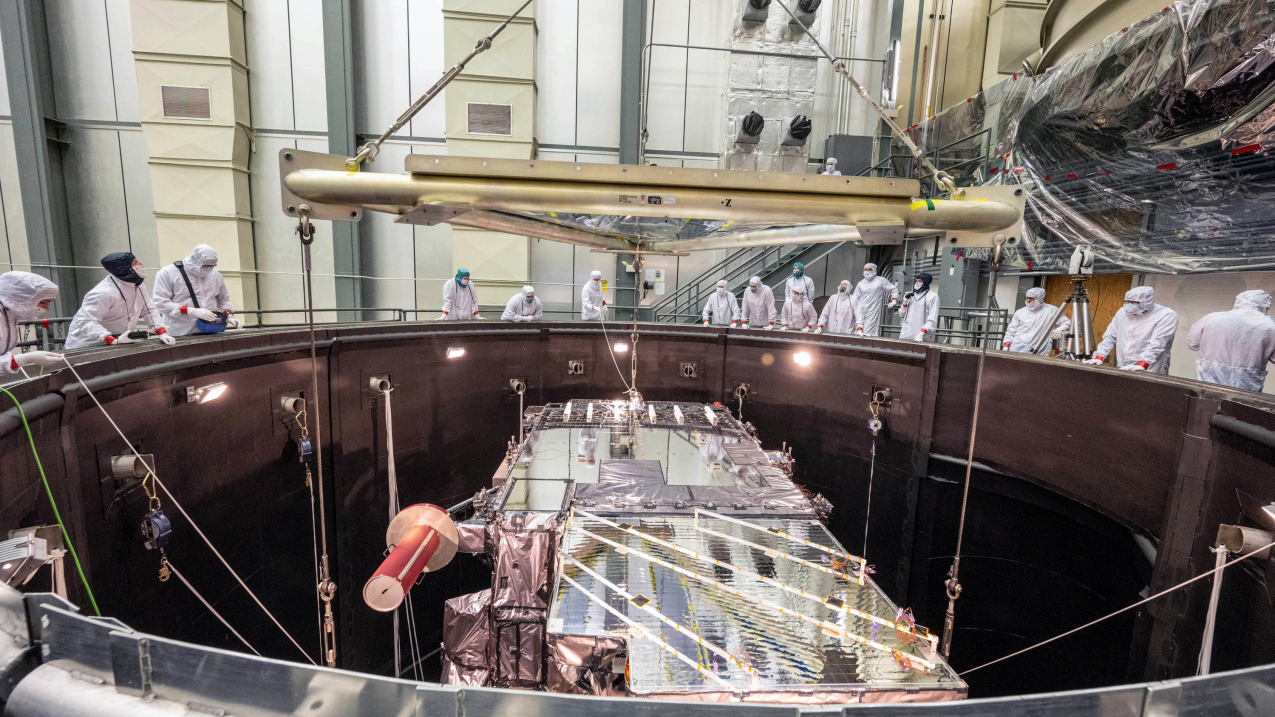
NOAA’s GOES-T, a geostationary weather satellite, must go through rigorous testing before launch. Here, it is lowered into a thermal vacuum chamber in August 2020 at a Lockheed Martin facility in Littleton, Colorado. This test simulates the extreme temperatures of launch and the space environment. (Image credit: Lockheed Martin)




